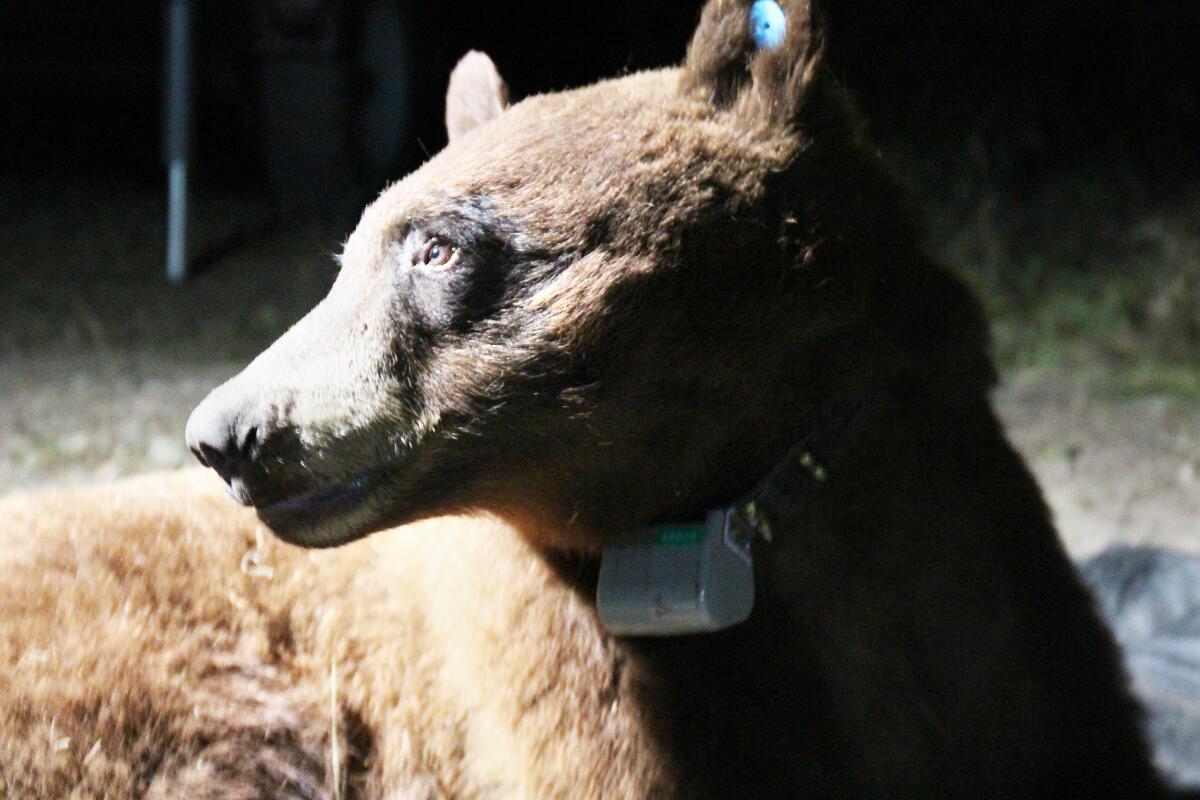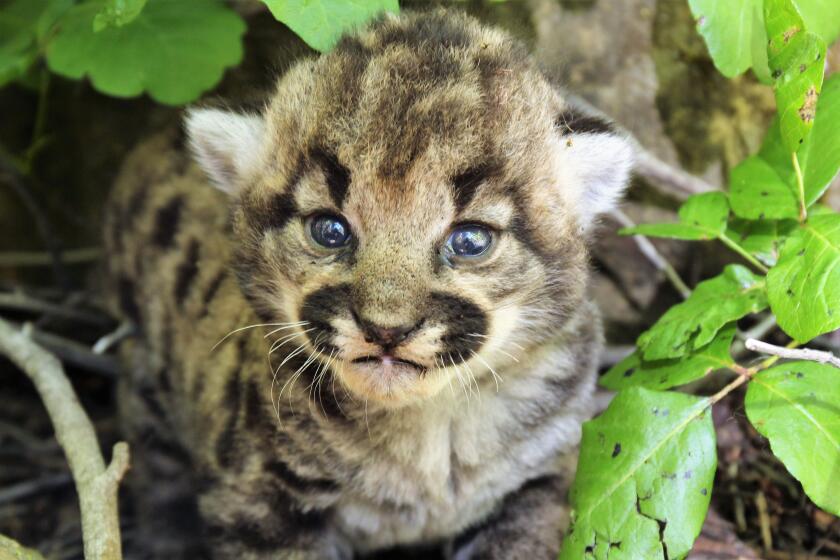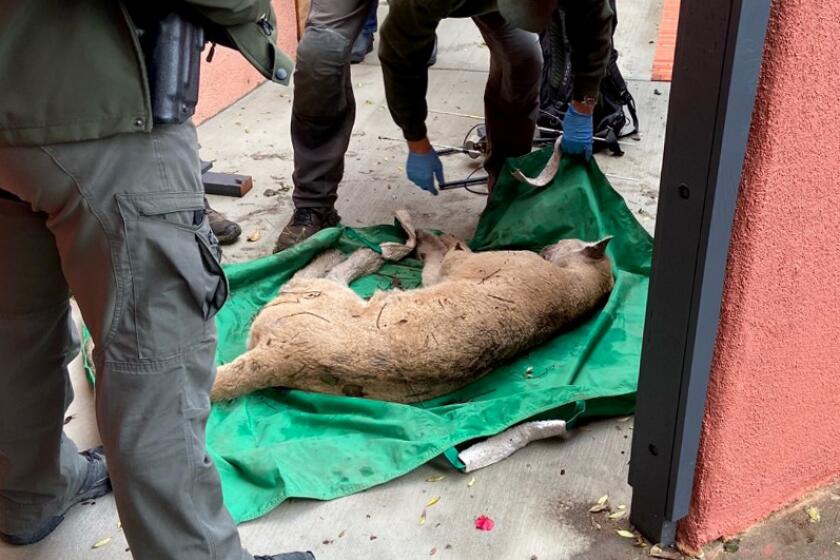The short life of BB-12 could help ensure longer lives for other bears and local critters

- Share via
The young male black bear known as BB-12 was quite the adventurous traveler during the three months he was tracked by the National Park Service before he was found dead last Thursday.
Where didn’t he go? He crossed the 101 and 118 freeways and once audaciously traversed Highway 23 north of the Tierra Rejada Road exit in broad daylight. He made at least two late-night jaunts to beaches near Malibu. He wandered the sand near Leo Carillo Beach and hit Pt. Mugu on another outing. Each time, he left telltale paw tracks that were discovered by early-morning beachgoers. (And his GPS collar confirmed he was near Pacific Coast Highway.)
He ventured into two counties (L.A. and Ventura) and through three mountain ranges — the Santa Monicas, the Simi Hills and the Santa Susanas. He was an adept crosser of high-traffic freeways — until he wasn’t. He was attempting to cross the 101 Freeway at the top of the Conejo Grade between Newbury Park and Camarillo, apparently on his way back to the Santa Monica Mountains, when he was struck by a vehicle.
P-77’s litter was found in a den in Simi Hills. What kind of life will these three pumas have if we don’t stop running them down on the roads and poisoning them with rodenticides?
Scientists are pretty sure the first time they ever glimpsed him, he was strolling down a street in Newbury Park. Two years later, they would track him to the western edge of the Santa Monica Mountains and collar him. Estimated to be 3 or 4 years old, he was thought by park service officials to be the only black bear living in the Santa Monica Mountains. A female, BB-11, is being tracked in the Santa Susanas, where there is a breeding population of black bears.
BB-12’s short life could have a long legacy. His excursions gave scientists more data on how animals are moving in search of habitat. Later this year, the National Park Service and several other local and state agencies will begin a study on how animals travel (or attempt to travel) in the area of the Conejo Grade — where this young male bear was killed.
In the decade since he was collared as a young lion, P-22 has become emblematic of all that is wild and wonderful in Los Angeles.
Tracking the many crossings of BB-12 in the last three months will help scientists find the points of connectivity from one habitat to another. These are the places where various wild animals risk their lives crossing busy roads.
For bears, mountain lions and all manner of wildlife, highways and roads with high-speed traffic are treacherous dividers between swaths of habitat necessary for mating and territory. Years of observing how animals repeatedly crossed the 101 at Liberty Canyon — or approached the freeway, thought better of it and turned away — led to the state-of-the-art wildlife corridor under construction there. The Wallis Annenberg Wildlife Crossing is scheduled to be completed in 2025.
There are more safe-crossing efforts afoot. A law passed last year will create a list of areas crucial for wildlife movement and require that any new state transportation projects in those areas mitigate their impact on wild animals.
The more scientists can offer wild animals a safe passageway from one habitat to another, the more they can avoid our vehicles. That’s something we want so they can thrive and we can marvel at their coexistence with us.
More to Read
A cure for the common opinion
Get thought-provoking perspectives with our weekly newsletter.
You may occasionally receive promotional content from the Los Angeles Times.











